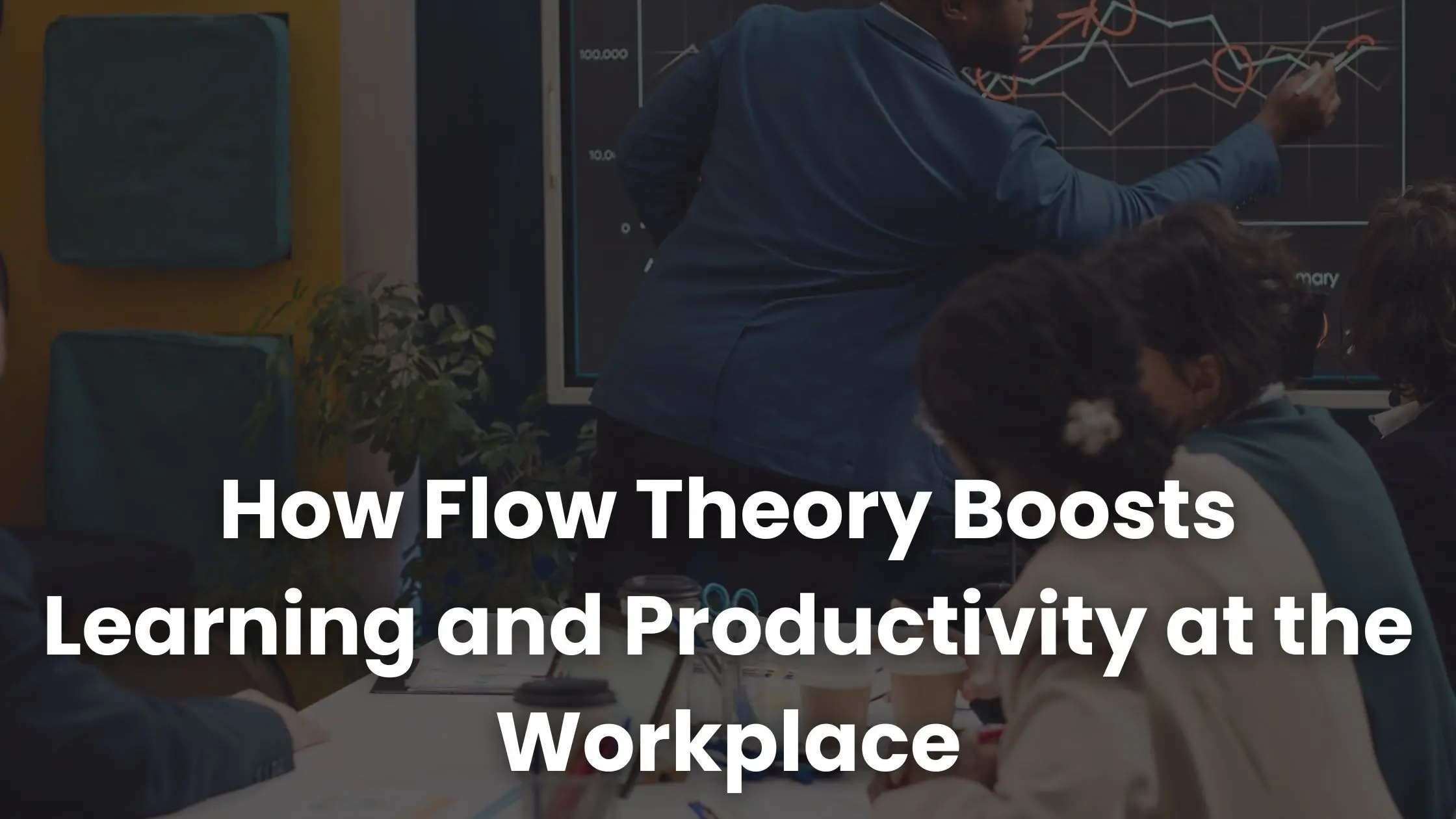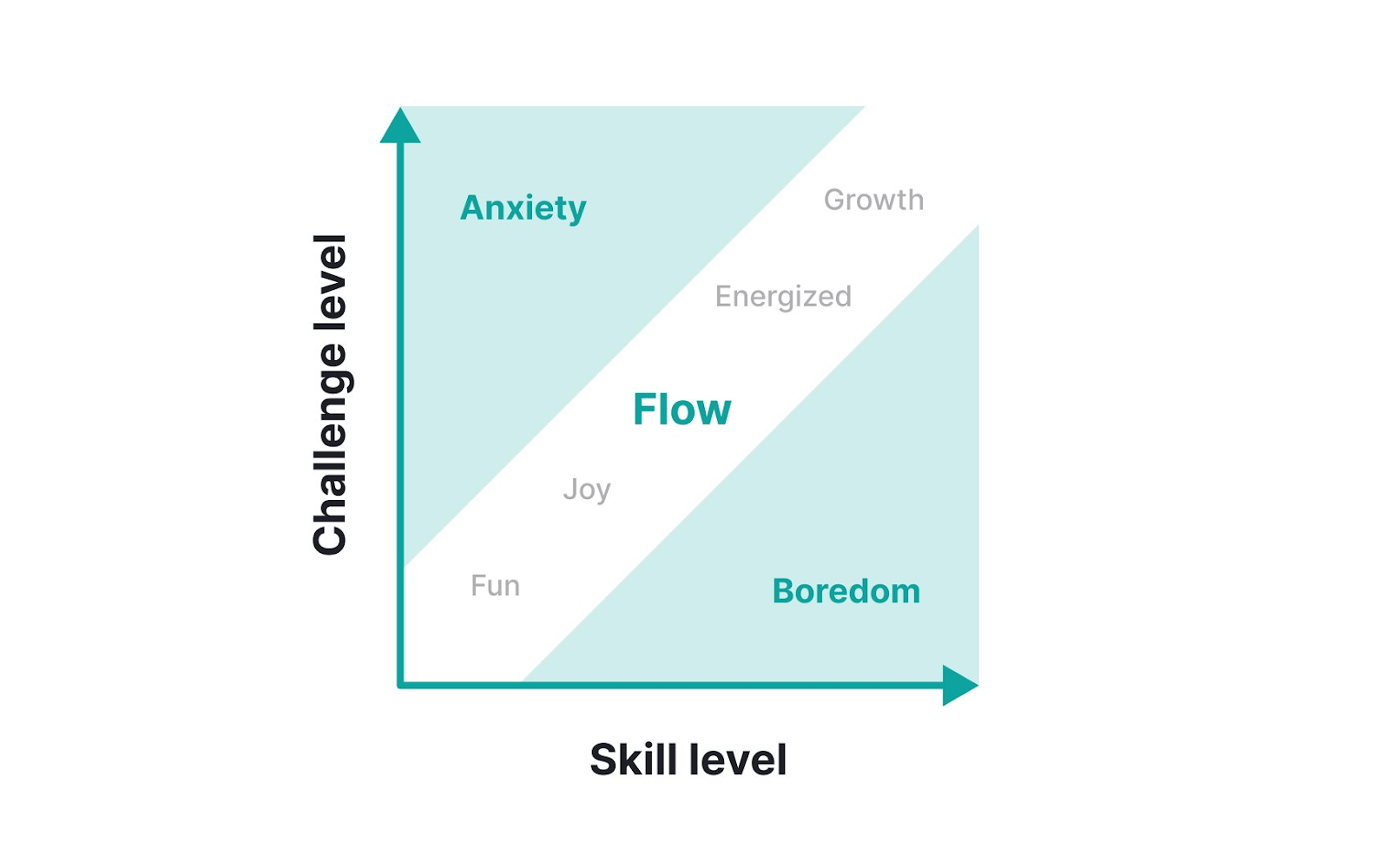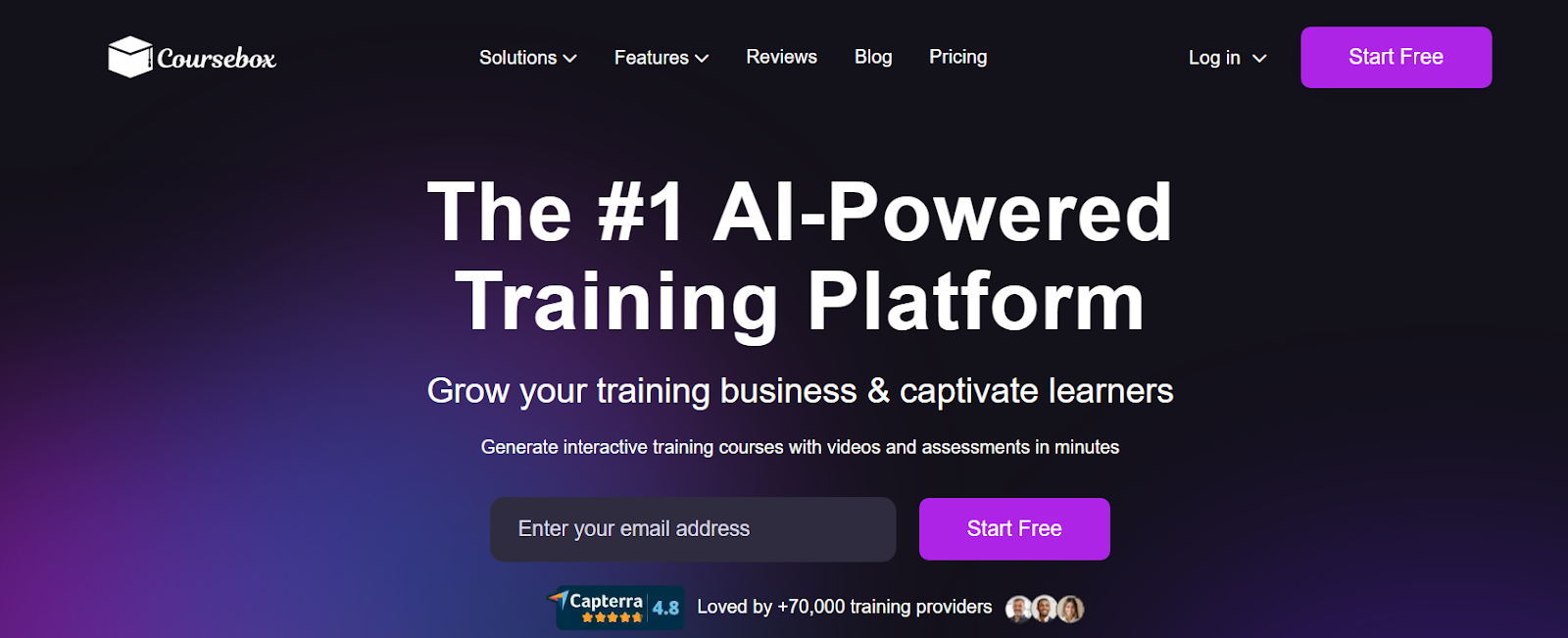How Flow Theory Boosts Learning and Productivity at the Workplace
Learn what is flow theory and how it connects to high performance, enhanced learning, and productivity in the organization.
Learn what is flow theory and how it connects to high performance, enhanced learning, and productivity in the organization.

Ever been so deeply involved in a project or a presentation that you realize you haven’t checked your phone in hours? You feel you are locked in time, and your mind is in an ever attentive state. Everything else just kind of fades into the background.
Such a situation is not forced; it just happens. This is what we call flow.
The Flow theory is actually a secret ingredient to learning faster, solving problems, and acting more creatively at work. When we begin to enjoy what we do — whether it’s training, skill development, and work — all become productive. The level of performance goes up, and the burn-down state and stress go significantly down.
Now, how do we create such moments at work? Let’s explore what is flow theory and how it can translate into effective learning and productivity.
Psychologist Mihaly Csikszentmihalyi introduced the flow theory. According to Csikszentmihalyi, the state of flow is a mental state where a person becomes deeply immersed in an activity. The whole experience becomes so pleasant that the person continues to perform the task no matter what challenge comes their way.
Flow makes you feel a far greater sense of satisfaction and happiness in the activity you are currently performing. It is a state where time feels still and there are no distractions or distortions.
Keep in mind, in the flow theory, we are not talking about being busy or focused. Flow only happens when your skills are in perfect alignment with the challenges in front of you. This sweet moment keeps you energized and motivated to perform your best.
Flow is also not about multitasking or casual engagement. It’s a state of concentration where you don’t have to exert any effort. The flow theory model explains what drives people into a state of flow.

When the skills and challenges are high and in a balanced state, we enter the ‘flow channel.’
This is a state of deep concentration, creativity, and timelessness. At this point, we are not anxious or bored; in fact, we are completely engrossed in the work, giving our peak performance.
In the flow model, this is the state of anxiety. The task is too hard for us, and so instead of being focused, we’re stressed out and more likely to disengage.
This is the state of boredom. It means that we are currently working on a task that requires fewer skills than we possess. The work doesn't motivate us, and we often check out, feeling disinterested.
This is what we call apathy. It's an unmotivated state where neither the task nor the skill set provides any mental boost or motivation. This is the work grind.
The sense of relaxation we feel when we are in the zone comes here. The task at hand does feel satisfying, but it's not energizing.
This is where we are challenged just enough not to go into stress mode. This is where we are just approaching or standing on the brink of flow.
How would you recognize flow? How would you know you are in the moment?
Flow can be recognized by different feelings. Time may seem to just stop. Hours will feel like minutes. There is a highly distinct and effortless focus where you lose sense of all distractions and your mind stays relaxed yet sharply focused.
Individuals going through the flow feel that each challenge becomes rather engaging. Instead of being intimidated by the situation, they feel motivated by it. When we are deeply immersed in the task, we enter a relaxed mental state, our muscles feel relaxed, and our breathing comes into a rhythm too.

According to Csikszentmihalyi, the state of flow is characterized by certain factors.
It’s quite common to feel suffocated, bored, or anxious at work. However, these conditions, when they build over time, lead to underperformance, which is why we need to implement an effective flow model at the workplace.
The right flow model can enhance the employee's productivity, taking them a long way in improving the performance of the overall organisation. Let’s take a look at the conditions we need for achieving the state of flow at the workplace.
To achieve success, we must have an end goal in mind. The better and more clearly defined the goal, the more achievable it seems. The specific goal also leads to specific responses and attention from the employees.
Hence, the goal is the precursor to achieving the state of flow.
The next thing is that we need to maintain a solid balance between the perceived skills of an individual and the challenges of the task. For the state of flow, the challenges presented must match the employees' individual capabilities.
You can’t undermine the power of feedback. Reviewing performance and understanding progress is very important for flow. The assigned tasks must provide immediate and clear feedback.
Feedback helps an individual and organisation make the necessary adjustments during the task to meet changing demands or to guide the employee in the right direction.

Flow is not a metaphor or a nice-to-have thought. It’s a critical tool for effective learning and high productivity in the workplace. Research clearly shows that learners who experience flow are able to engage deeply and retain their learning for longer. They also develop better and stronger problem-solving skills.
The process of learning becomes rewarding in itself, and the focus shifts from results and rewards to the process for the learners.
Similarly, trainers and educators use flow to their advantage by designing tasks to match and balance the job or challenge with the individual’s abilities. Learning goes from passive reception to active engagement, leading to better outcomes, higher productivity, and participation levels.
The role of HR is to continually develop the skills of its employees. Skill development can be done via formal training and on-the-job learning. There are a number of benefits of skill development, including higher engagement and an increase in productivity.
According to an analysis, the number of skills needed for a job increases by 10% year over year. Most skills simply become irrelevant in just three years.
So skill development has to be quick, effective, and relevant. We need individual talent mapping for each employee to keep them in the zone.
This is where the flow theory comes in. When an individual employee is given an environment where they can strive and work in peace, they can achieve the state of flow, which ultimately benefits the enterprise.
The conventional linear career path is no longer viable today. We are more focused on having skilled workers instead of robots who follow a preset career path designed for them. Skilled individuals create their own trails according to their professional and personal preferences.
Employees today need a healthy amount of challenges to help them grow professionally. Hence, to keep the employees ambitious and passionate and in a state of flow, HR has to be proactive.
We need appropriate tracking of organisational and individual skills to identify the best options and roles for each employee. We also need this information to design formal and informal learning and development programs, which are customized for each individual.
Thankfully, with platforms like Coursebox, we can easily monitor the progress of each individual in a training program. We can map their learning progress and find areas where they need training or further skill development.
When the organisation provides the employees with such initiatives, the entire team feels more empowered, which leads to future success.

Cultivating flow at work is not as hard as it seems. All you need is intention and practice.
The first thing individuals need to do is to set clear, distinct goals that define success. When you have the end goal in view, your brain can focus clearly without wandering off.
The next thing you need to do is choose the tasks that build your abilities, but at the same time do not overwhelm you in any way. The task should not feel too easy, but it should not be so difficult that it’s impossible to get it done.
If the difficulty level is high, set personal performance benchmarks or break it down into smaller, manageable chunks or tasks.
Turn off all notifications, unwanted tabs, and create a safe workspace where you can focus. Here you can use the Pomodoro technique and work in focused work sprints.
For flow to work, you need to balance your focus and rest. It should not feel tiring or burdensome at any point.
Constant feedback will help you stay on track and focus on the task. This can be done by self-monitoring, getting peer review, or using the built-in software systems. When you periodically review feedback, you will stay engaged and be able to adjust your course as needed.
Exercise your brain to stay in the present and work with techniques to reduce anxiety. Our brains are often cluttered with thoughts, and we bear a huge mental load that often restricts our productivity.
With mindfulness, you can strengthen your abilities and sustain flow, especially during pressure or demanding times.
Flow theory is the key to unlocking high performance in the organisation. It shows how deep immersion can optimize the learning, creativity, and focus of the entire team.
When we design an environment to balance skills with the challenges, while minimizing distraction, we can cultivate a culture of flow. This can turn everyday moments into powerful opportunities for the growth of the organisation as well as personal fulfilment.
So the next time you are completely engrossed in something you are doing, know that you have entered the brain’s most powerful state of flow. Use the energy and passion you feel at that time to put in your best work and acquire the deepest form of learning.
Get started for free today.
